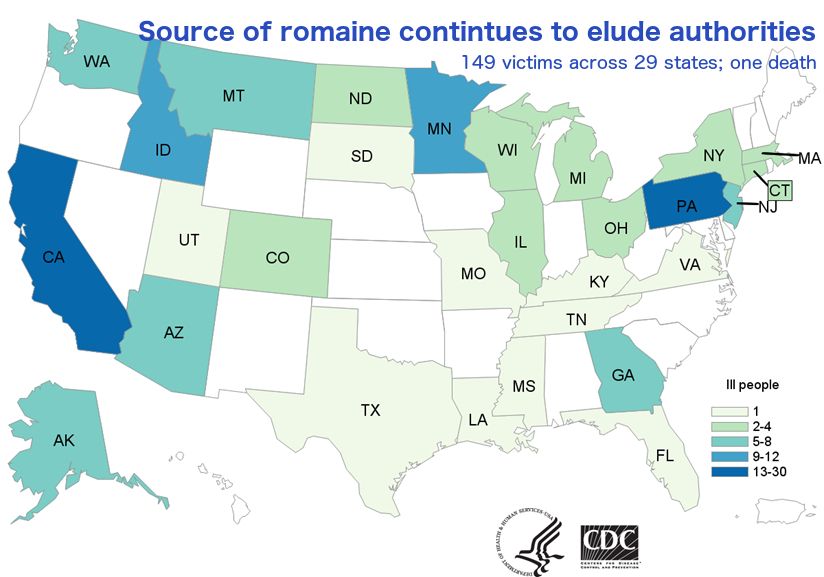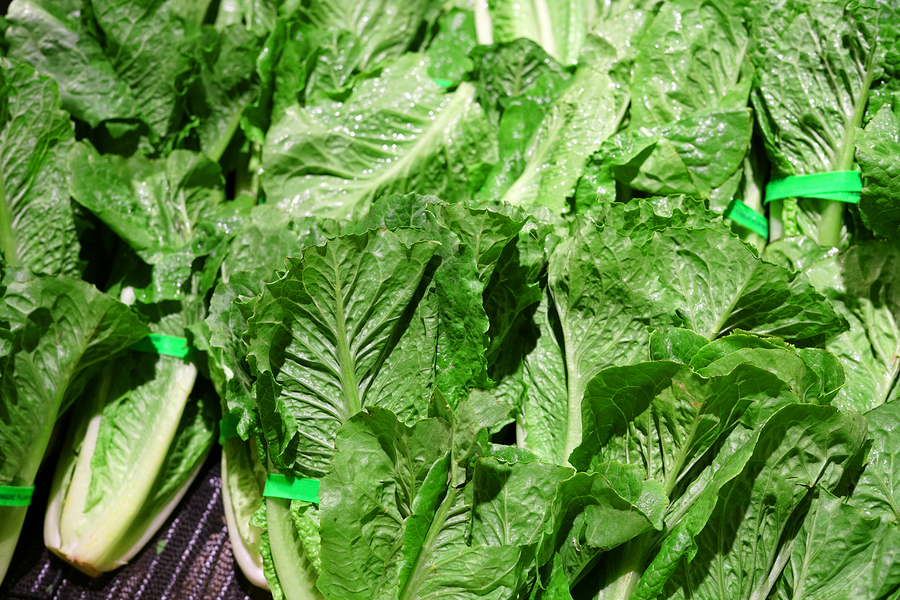The CDC first posted warnings about romaine lettuce in early April.1 But it wasn’t until about two weeks ago that we started hearing about people getting sick or recalls for the leafy green. Health officials believe they have traced the outbreak to a farm in Yuma, Arizona (which provides most of the romaine sold in the U.S. during the winter) but are unsure how many more cases might be reported.
The early or initial symptoms of E. coli infections usually appear about three to five days after a person ingests the bacteria (although it can affect someone in as little as one day or up to ten days later); symptoms include fever, nausea, vomiting, and stomach cramps though it may also include bloody diarrhea.
According to the CDC who recently updated their numbers, 149 people in 29 states have been affected.2
If you are eating romaine lettuce, please make sure it didn’t come from Arizona. (Or maybe temporarily switch to any number of other leafy greens.)
 To date, at least 64 people have been hospitalized, including 17 with kidney failure and one death occurred in California. This is the largest multi-state E. coli outbreak in the U.S. in a dozen years. 3
To date, at least 64 people have been hospitalized, including 17 with kidney failure and one death occurred in California. This is the largest multi-state E. coli outbreak in the U.S. in a dozen years. 3












